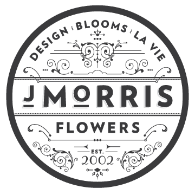How Is Harmony Used in Floral Design?
Mar, 15, 2023
Have you ever stopped to admire the beauty of a flower arrangement? If so, then you've experienced first-hand the power of harmony in floral design.
As florists, we know that every arrangement has potential to not only bring joy but also inspire peace and comfort.
Harmony is an essential element for any successful floral design, helping us create pleasing arrangements with dimension and depth.
In this blog post, we'll explore how we use harmony when creating floral designs to make them unique yet captivating - from the colors employed and textures used to the shapes and materials incorporated - leaving our clients feeling both lifted and delighted.
How harmony is used in floral design
Harmony is an important concept used to create beauty and balance in floral design.
While some designs rely on contrast and juxtaposition, harmony is created by matching elements of the design together.
Symmetry and order are both used when finding harmonic elements in a floral display; this creates a pleasing overall aesthetic that can be more calming and inviting than a design filled with extremes.
With harmony, there will still be a diverse range of colors and textures, but these are modeled into a cohesive whole that draws attention to the beauty of its components rather than any individual one.
When designing with harmony, every element should work together seamlessly to create an eye-catching design with depth and interest.
A Captivating Design is Created Through the Use of Color, Texture, Shape, and Materials.
Color, texture, shape and materials all play a crucial role when designing a floral arrangement. Each of these elements can draw attention, create contrast and change the feel of a display.
Color is used to bring life and interest to an arrangement and encourage eye contact with the viewer.
Texture works to bring different textures together, providing visual complexity.
Shape is used to manipulate the design of the display by introducing new forms.
Materials also affect the viewer’s experience by adding unique elements that show creativity.
When combined strategically, these design elements will generate an unforgettable experience.
How to choose colors that complement each other
Selecting the right color palette is paramount to making a floral design look stunning.
A good way of picking complementary colors is to utilize a basic color wheel.
We consider the primary and secondary shades available; blue, yellow and red are all great starting points.
From there, we evaluate the differing hues of those colors that can be blended harmoniously. Deep blues pair nicely with lighter blues, yellows with oranges, and reds with pinks.
Combining warm and cool combinations together in a unique manner can often create delightful results.
The finishing touches such as adding greenery or other colored small stems aid in perfectly rounding off our chosen palette. Ultimately when choosing colors, we want to consider the effect we are hoping to create before settling on any particular combination.
Conclusion
At J. Morris Flowers, we understand the importance of creating harmony in floral design to bring joy and peace to our clients. Our team is passionate about utilizing color, texture, shape and materials to create captivating designs that will leave a lasting impression. We strive for perfection with each arrangement so you can trust us when it comes time to pick out flowers for any event or occasion. Visit J. Morris Flowers today and let us show you how harmony can be used to make something truly special.


Leave a Comment